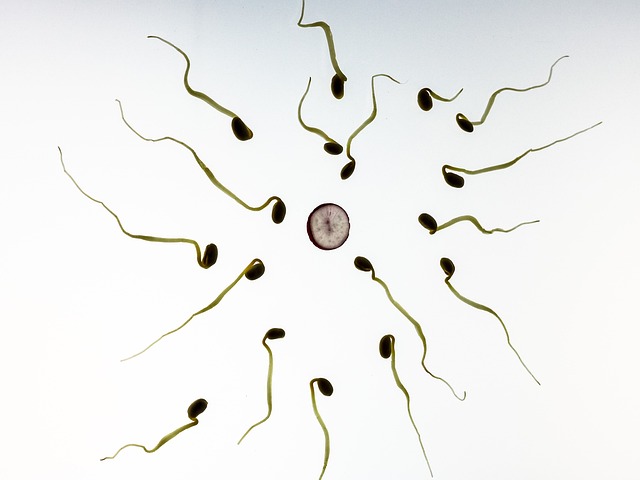Fertility is a delicate and complex process that requires many factors to align perfectly. For many women, the journey to parenthood isn’t as straightforward as they might hope. One of the most common but often overlooked causes of infertility is problems with the Fallopian tubes. These vital structures play a key role in conception, and any issues can significantly impact a woman’s ability to conceive. But, all is not lost! In vitro fertilization (IVF) has become a powerful tool for overcoming such challenges. Let’s explore how Fallopian tube problems affect fertility and how IVF can help.
What Are the Fallopian Tubes?
Before diving into the problems, it’s essential to understand the role of the Fallopian tubes in reproduction. The Fallopian tubes are two slender tubes that connect the ovaries to the uterus. Each month, an egg is released from the ovary (a process called ovulation) and travels through the Fallopian tube toward the uterus. This is where fertilization typically occurs if sperm is present. The fertilized egg then moves to the uterus, where, it can be implanted and developed into a pregnancy.
How Fallopian Tube Problems Affect Fertility?
When the Fallopian tubes are damaged, blocked, or absent, they can prevent sperm from reaching the egg or prevent the fertilized egg from reaching the uterus. Here are some of the most common issues:
1. Blocked Fallopian Tubes
One of the most common reasons women experience difficulty conceiving is due to blocked Fallopian tubes. Blockages can occur due to:
- Pelvic Inflammatory Disease (PID): This infection can cause scar tissue to form in the Fallopian tubes, leading to a blockage.
- Endometriosis: This condition, where tissue similar to the lining of the uterus grows outside the uterus, can cause scarring and adhesions around the tubes.
- Surgical Scarring: Previous surgeries in the abdomen or pelvis can result in scar tissue that affects the tubes.
- Congenital Abnormalities: Some women may be born with blocked or underdeveloped Fallopian tubes.
2. Damaged Fallopian Tubes
Infections, surgeries, or other injuries to the Fallopian tubes can cause long-term damage, affecting their ability to transport eggs or sperm. This is often seen in women who have had severe pelvic infections or pelvic surgery.
3. Absence of Fallopian Tubes
In some cases, women may have no Fallopian tubes due to a congenital condition or surgery to remove the tubes. Without the tubes, an egg can’t meet sperm naturally.
How IVF Can Help Overcome Fallopian Tube Issues?
If you’re experiencing fertility issues related to Fallopian tube problems, IVF (In Vitro Fertilization) can offer a potential solution. IVF bypasses the need for healthy Fallopian tubes by taking over the natural process of fertilization. Let’s break down how IVF works.
1. Ovarian Stimulation
The first step in IVF is to stimulate the ovaries to produce multiple eggs (instead of just one egg as in a natural cycle). Fertility medications are used to encourage the ovaries to release multiple eggs.
2. Egg Retrieval
Once the eggs are mature, a doctor retrieves them through a minor surgical procedure, which involves using a needle to collect the eggs directly from the ovaries.
3. Sperm Collection
Sperm is collected from a partner or a donor. The sperm is then prepared in the laboratory for fertilization.
4. Fertilization in the Lab
The eggs and sperm are brought together in the lab. This is where IVF gets its name, as fertilization happens outside the body—hence “in vitro,” meaning “in glass.” In some cases, if sperm quality is a concern, doctors may use ICSI (Intracytoplasmic Sperm Injection), where a single sperm is injected directly into an egg.
5. Embryo Culture
The fertilized eggs (embryos) are cultured for several days. The embryologist monitors their development and selects the healthiest embryos for transfer.
6. Embryo Transfer
The selected embryos are then transferred into the uterus. This step is painless and does not involve the Fallopian tubes at all, making it a perfect option for women with blocked or damaged tubes.
7. Pregnancy Test
About two weeks after the embryo transfer, a blood test will determine if implantation has occurred and if you’re pregnant.
Why IVF is a Game-Changer for Women with Fallopian Tube Problems
Here’s why IVF is such an effective solution for women with Fallopian tube issues:
- Bypasses the Tubes: IVF bypasses the Fallopian tubes entirely by performing fertilization outside the body, so even if the tubes are blocked or absent, the process can still work.
- Increased Control: IVF allows doctors to have more control over the timing of ovulation, egg retrieval, and fertilization. This is particularly helpful when Fallopian tube problems are causing infertility.
- Use of Donor Eggs or Sperm: For women who have additional fertility concerns, such as poor egg quality, IVF can still be performed using donor eggs or sperm, further increasing the chances of a successful pregnancy.
Success Rates of IVF in Women with Fallopian Tube Issues
The success of IVF can vary depending on many factors, including the woman’s age, the quality of the eggs and sperm, and the overall health of the woman. However, studies show that women with Fallopian tube issues have relatively high success rates with IVF, especially if the tubes are completely blocked or absent. The success rates can be as high as 40-50% per IVF cycle, depending on the clinic, age, and other factors.
Other Considerations for Women Facing Fallopian Tube Problems
While IVF offers a fantastic solution for many women, there are a few things to keep in mind:
- Emotional and Financial Cost: IVF can be emotionally and financially demanding, especially if multiple cycles are needed. However, many find that the potential reward of a healthy pregnancy makes it worth the investment.
- Lifestyle and Health Factors: Maintaining a healthy lifestyle, avoiding smoking, and managing stress can all contribute to higher IVF success rates.
- Fertility Preservation: If you’re planning to delay starting a family due to Fallopian tube problems or other reasons, fertility preservation options like egg freezing may be worth considering.
Wrapping Up: Overcoming Fallopian Tube Challenges with IVF
Fallopian tube problems are a significant cause of infertility, but they don’t have to be the end of the road to parenthood. IVF offers a reliable solution that bypasses the need for functioning tubes, providing a ray of hope for women struggling with these issues. If you’re dealing with Fallopian tube problems, consulting with a fertility specialist can help you understand your options, assess your unique situation, and find the best path forward.
Remember, fertility is a journey, and with the right support and treatment, many women can achieve the family they’ve dreamed of. IVF has empowered countless individuals to overcome obstacles and successfully bring new life into the world.
Have you or someone you know been affected by Fallopian tube issues? What’s your experience with IVF? Feel free to share your thoughts in the comments below!




